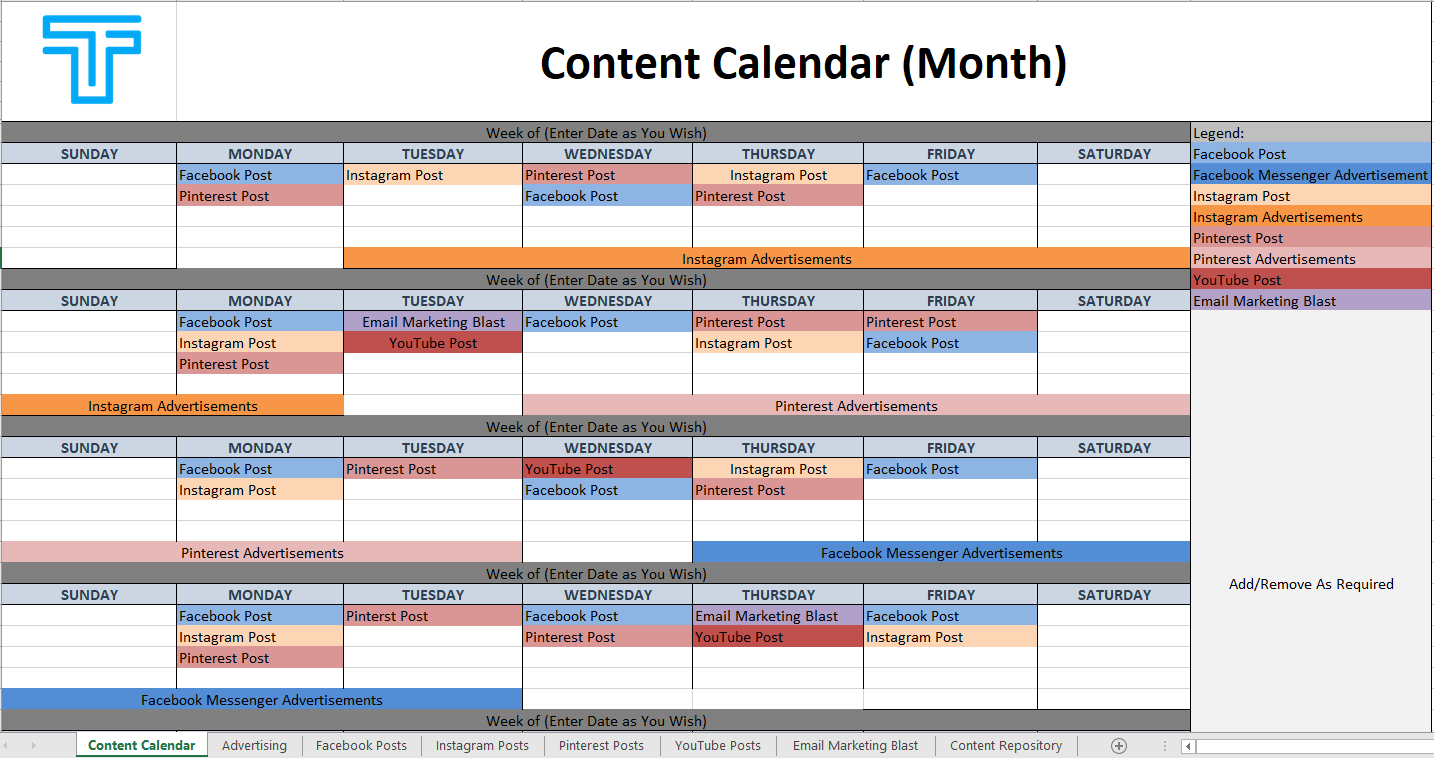The Five Ws of Creating a Content Calendar
Are you struggling with creating quality content on a regular basis (especially when juggling other tasks)? Content calendars might be the solution for you. A content calendar is a planning tool that outlines your content creation and publishing schedule; it provides a visual overview of your upcoming content, and their related subtasks.

Content calendars can help with:
- Organization: A content calendar helps you to organize your content creation and distribution across different channels. This ensures that your content is relevant and aligned with your goals. By mapping out your content strategy in advance, you can ensure that your content aligns with your brand voice, messaging, and target audience.
- Planning: With a content calendar, you can plan your topics and themes in advance to avoid last-minute scrambling for content ideas. This proactive approach allows you enough time to brainstorm, research, create, and refine your content well ahead of time, minimizing the chances of publishing inconsistent content or missing deadlines.
- Collaboration: YA content calendar enables better collaboration with your team by establishing responsibilities and deadlines for everyone. By having a shared document or tool, all team members can contribute to the content creation process, share feedback, and ensure that everyone is on the same page.
Ultimately, content calendars can save time and resources while ensuring that content is delivered effectively. You can make the most out of your content calendar by using the “Who, What, When, Where, Why” framework. From understanding your target audience to setting goals, this framework can guide you in creating a comprehensive content calendar.
Who: Who is your target audience and who will be creating the content? Your target audience will influence the topics, tone, and format of your content, while your content team will determine the resources and skillsets needed to produce the content.
What: What types of content will you create and what topics will you cover? This can include blogposts, videos, social media posts, email newsletters, and more. Consider the needs and interests of your target audience when deciding on your content topics.
When: When will you publish your content? This can include the frequency of your content, the days of the week, and the time that you’ll publish. Take into account any key dates or events that are relevant to your niche.
Where: Where will you publish your content? This can include platforms such as your website, or social media channels. Consider which platforms are most effective for reaching your target audience.
Why: Why are you posting? Determine your content goals and objectives. Do you want to increase website traffic, generate leads, build brand awareness, educate your audience, or something else? These goals will guide your content strategy and help you measure your success.
In conclusion, a content calendar is a vital asset for content creators, communicators, and marketers alike. It not only helps in staying organized but also assists in planning content ahead of time and enables efficient team collaboration. By using the “Who, What, When, Where, Why” framework, you can create a content calendar that aligns with your goals and resonates with your target audience.